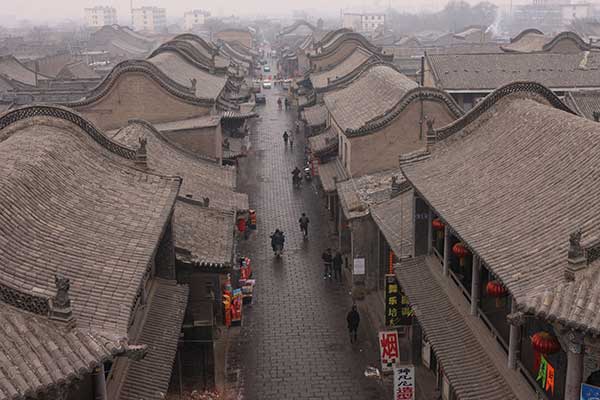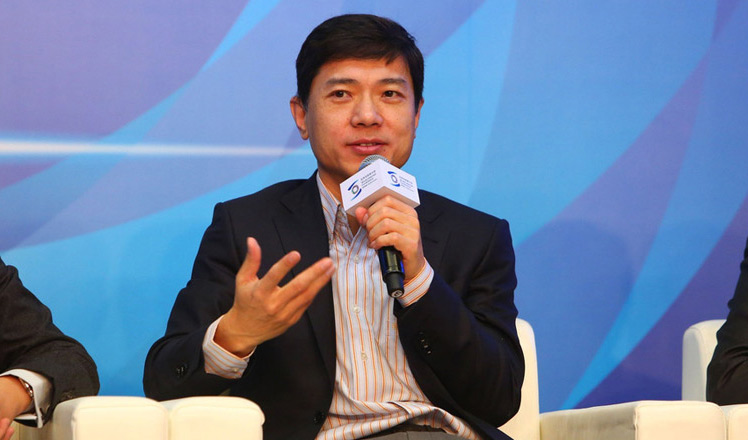An ancient finance hub shines after its golden era
Updated: 2015-12-21 08:08
By Li Yang/Sun Ruisheng(China Daily)
|
||||||||
 |
|
[Photo provided to China Daily] |
Qixian county's ancient city is a story of faded glory-one that's perhaps set to stage a revival as tourists discover its ancient allure.
It was once a quadrant of North China's most prosperous banking cluster.
But the settlement has been all but forgotten by outsiders. That's partly because the neighboring ancient town of Pingyao's early and advanced tourism development left Qixian in its shadow.
Yet Qixian is more like Pingyao's sister city, rather than a lost cousin.
Still, there are sibling differences.
One is Qixian remains mostly intact-save for its walls, four embrasure towers and four barbican gates.
These barricades' bricks were cannibalized to rebuild houses in the 1950s, following the War of Resistance Against Japanese Aggression (1937-45) and the civil war from 1946 to 1949.
(Pingyao's walls remain largely intact.)
It has also largely so far escaped renovation, unlike Pingyao, which was renovated and repackaged as a tourist destination starting a decade ago.
Only a few shops and eateries have sprung up to serve Qixian's visitors.
Residents lead quiet lives.
They believe the settlement's feng shui blesses them.
The 3-kilometer, square city wall stood 6 meters high.
Two perpendicular flagstone streets intersect in the center of downtown.
The quadrants these 10-meter-wide thoroughfares spliced into districts had their own schools and wells. Government and military departments were constellated throughout, as are 11 temples, each with its own Buddha or god that overseas a particular realm of residents' life.- Ancient tomb of Northern Zhou Dynasty discovered in Xi'an
- Nanyang's ancient town becomes 'painter village'
- Ancient ancestral worship ceremony held in Xiamen
- Culture: TV drama's focus on ancient etiquette rules pays off
- Ancient town in the echo of Internet
- Ancient Chinese etiquette: Another delight for court drama fans
- 10 execs suspected of faking pollution data
- Top 10 social media events of 2015
- Life sentences for east China child traffickers
- Shenzhen leaps to top of efficiency list in 2 yrs
- Pandas prefer choosing their own sex partners, researchers find
- Tycoons exchange views on building a cyberspace community of shared future
- Iraq holds its first beauty contest in 40 years
- Libyan factions sign UN deal to form unity government
- World's refugees and displaced exceed record 60 million
- No specific, credible terror threats against US: Obama
- UN Security Council adopts resolution to cut off Islamic State funding
- California shooters' ex-neighbor charged with supporting terrorists

 Iraq holds its first beauty contest in 40 years
Iraq holds its first beauty contest in 40 years
 Highlights at the Light of the Internet Expo
Highlights at the Light of the Internet Expo
 Finger Icons: Guess who's who
Finger Icons: Guess who's who
 Older mother who lost only child delivers another baby
Older mother who lost only child delivers another baby
 Top 10 most attractive FDI destinations in the world
Top 10 most attractive FDI destinations in the world
 Canadian college offers flying classes to legless girl
Canadian college offers flying classes to legless girl
 Fashion buyer scours the world for trendy items
Fashion buyer scours the world for trendy items
 Tycoons exchange views on building a cyberspace community of shared future
Tycoons exchange views on building a cyberspace community of shared future
Most Viewed
Editor's Picks

|

|

|

|

|

|
Today's Top News
Shooting rampage at US social services agency leaves 14 dead
Chinese bargain hunters are changing the retail game
Chinese president arrives in Turkey for G20 summit
Islamic State claims responsibility for Paris attacks
Obama, Netanyahu at White House seek to mend US-Israel ties
China, not Canada, is top US trade partner
Tu first Chinese to win Nobel Prize in Medicine
Huntsman says Sino-US relationship needs common goals
US Weekly

|

|








